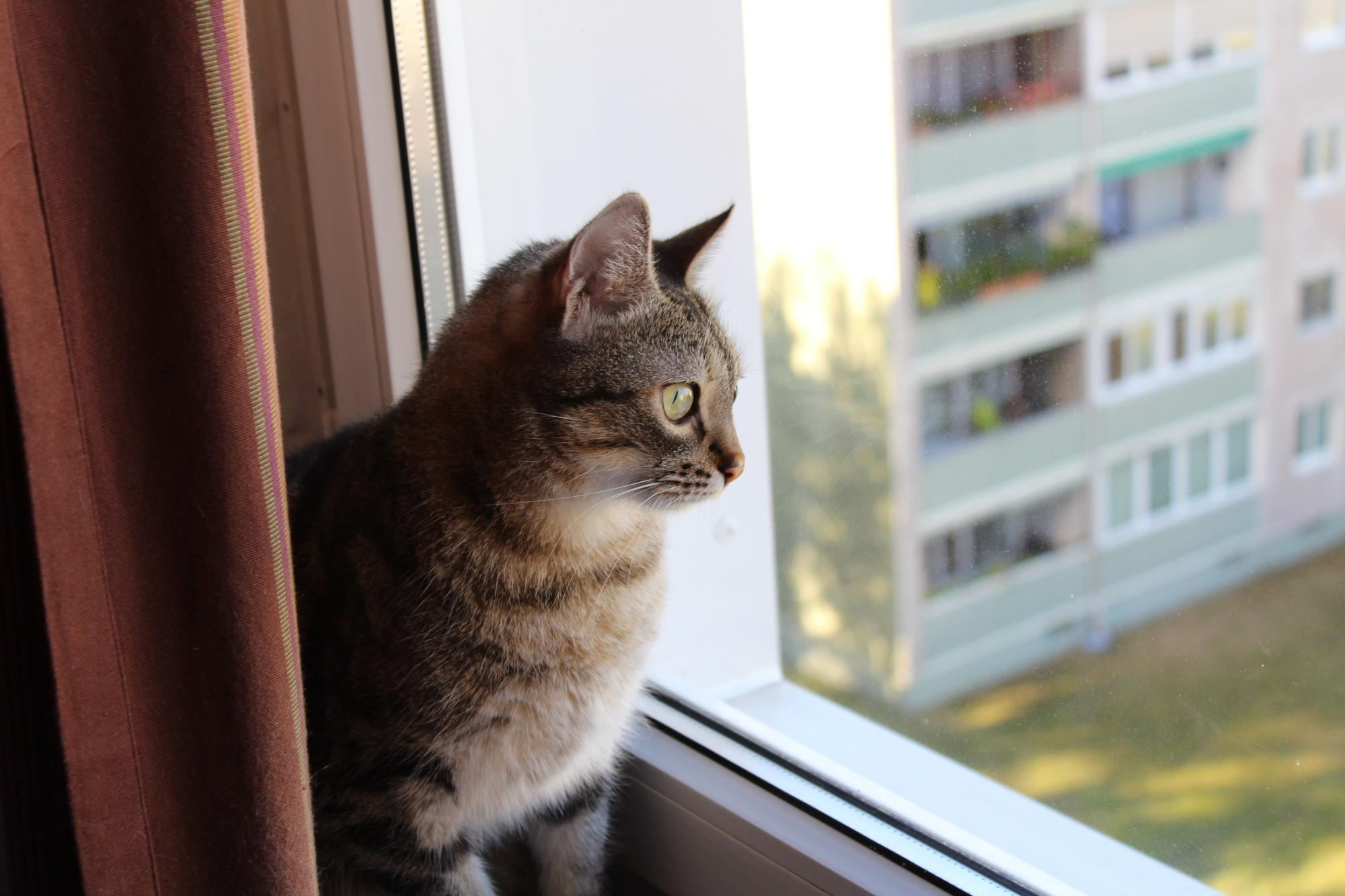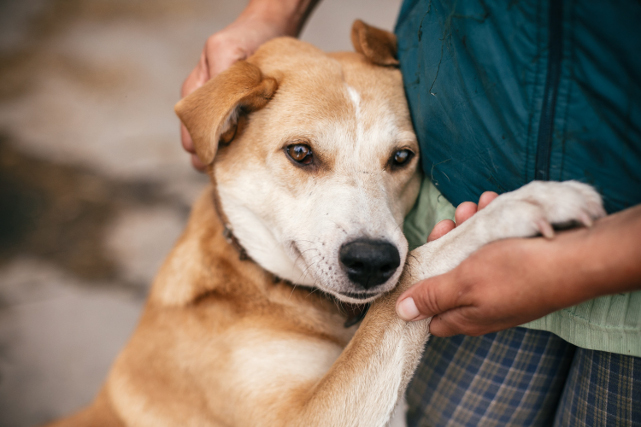When people are sick or in pain, we tend to talk about it. Whether it’s calling in to work, telling a doctor about your symptoms, or simply venting about feeling under the weather, communicating our pain is the first step to getting the help we need.
Unfortunately, our pets don’t have that same form of communication, especially when they’re feeling uncomfortable or in pain. In fact, cats and dogs tend to have an inherent instinct to hide their pain. This is a behaviour that stems from their wild ancestors who couldn’t risk showing weakness to other predators.
While our pets are perfectly safe at home whether healthy or hurting, this instinct remains. That means that it’s up to both pet owners and veterinarians to determine when a pet is in pain.
What Causes Pain in Pets?
There are many things that can cause pain in pets. Everything from parasites to parvovirus can mean pain and discomfort for your cat or dog. With that said, one of the most common sources of pain in pets is osteoarthritis. Just like in people, osteoarthritis can inflame the joints and surrounding areas in the body, causing swelling, pain, and discomfort. While pets will do their best to hide their pain, there are a few common signs of joint trouble that pet owners should be on the lookout for.
In this article, we’ll cover a few of the top signs of pain in both cats and dogs, with a focus on pain caused by osteoarthritis. Keeping an eye out for these signals will let you know when there might be a problem, giving you the chance to get help for your furry friend as soon as possible.
Remember: all pets have their own unique personalities and quirks, so this is by no means a complete or exhaustive list. However, if you notice any of the following signs, it’s definitely a sign to pay closer attention to your pet, and possibly have them checked out by your veterinarian.
Signs Your Dog is In Pain
Since many dogs are generally happy, social creatures, you might assume it would be obvious when they’re in pain. However, it can often be hard to tell if you don’t know what to look for. That’s why it’s worth keeping the following information in mind.
Sign 1: Panting While at Rest
It’s perfectly normal for your dog to pant now and again, especially after an intense session of fetch or a long walk in warm weather. However, if you notice your dog is still panting while sleeping, laying down, or just slowly moving around, it could be a sign of trouble.
Not sure how much panting is considered excessive? While exact numbers vary, the average healthy dog should be taking between 15 and 35 breaths a minute while resting. If your dog is breathing more than 40 times a minute while otherwise relaxed, it should be some cause for concern.
Excessive panting in dogs could point to a number of issues, including:
- Pain caused by osteoarthritis
- Asthma
- Respiratory infections
- Heart disease
- Heat stroke
- Pain in the windpipe or airway
- Pneumonia
There’s no way to be certain of the cause of laboured breathing and panting at rest without talking to a veterinarian. They can do a full examination of your dog to figure out what’s wrong.
Sign 2: They’re Slow to Rise
If your dog is slow to rise after sleeping and lying down, it might be a sign that they’re dealing with pain and discomfort. Consider what you look like getting out of bed when your back hurts or your throat is sore—your pup is no different. Dogs that are in pain tend to sleep and rest more, and they won’t move as quickly when it’s time to wake up.
If your dog doesn’t seem to wake up with much energy on a regular basis, even when they’re enticed by treats, food, toys, or a walk, it could be a sign of ongoing pain and the exhaustion that comes with it. Many health issues can cause fatigue and slow wake-ups in dogs, but osteoarthritis is one of the most common ones.
Sign 3: Stiffness or Limping
If you notice your dog is limping or moving with unusual stiffness, it’s often a sign of osteoarthritis. The pain and swelling of inflamed, degenerating joints can easily impede your dog’s usual range of motion. Dogs will do their best to work around this issue, which can often lead to them favouring one foot over the other or moving rigidly to compensate for the pain.
As their owner, you’ll probably be the first person to notice when your dog isn’t moving the way they normally do. If the behaviour persists for more than a couple of days, it’s worth having them examined by a veterinarian to see how you can reduce pain and help your dog move more comfortably again.
Sign 4: Difficulty with Stairs
Noticing your dog is having a hard time getting down the stairs or moving downhill? This is a very common sign of joint pain. Osteoarthritis is the most common issue under this behaviour, but it could also be a sign of breed-specific joint issues, such as hip dysplasia in Labs, Shepherds, or Retrievers.
Dogs that are suffering from joint pain will often be reluctant to go up and down stairs, since walking on an incline forces them to put more weight on a single leg. Dogs that are really struggling may outright refuse to use stairs or climb hills at all, forcing their owners to adapt.
While trouble with stairs can be hard to avoid as pets get older, it should still be a sign that your dog needs to be checked out by your veterinarian.
Sign 5: Difficulties Getting In and Out of the Car
Most dogs love car trips. But if you notice your dog is suddenly very slow or hesitant when jumping in and out, it’s probably a sign of pain in the joints. As with staircases, getting in and out of the car requires the dog to put a lot of strain on individual limbs, which can be very painful if they’re dealing with osteoarthritis or other joint problems.
If you notice your dog having an unusual hard time with little hops in and out of the car, do them a favour and take them to the vet for a check-up.
Signs Your Cat is In Pain
Cats tend to be even more skilled than dogs at hiding pain and discomfort, so be sure to be on the lookout for these 5 telltale signs that your cat is struggling.
Sign 1: Your Cat is Hesitant About Jumping To and From Higher Surfaces
Cats are known for their agility. Most cats that are feeling healthy will happily hop around their environment, jumping even great heights with ease and grace. If you notice that your cat has become hesitant about jumping up and down from furniture, cat towers, or other high surfaces, it might be a sign that they’re dealing with pain.
As joint pain progresses, you might notice your cat jumping and moving around less and less. If your normally agile cat is suddenly staying on the floor and only jumping on things when absolutely necessary, it’s time to have them examined by a vet.
Sign 2: They’re Slow to Rise
Just like with dogs, cats are faced with low energy and outright exhaustion when they’re in chronic pain. Osteoarthritis is a very common cause of this behaviour, however other conditions and illnesses can make rising from being seated or lying down a difficult job for your cat.
This sign is harder to spot in cats since they tend to rest for so much of the day. Pay attention to your cat as they change gears from resting to activity—if it seems like it’s taking them a lot more time to rise up and do things around the home, such as eating or using their litter box, it might be a sign of fatigue that comes with pain.
Sign 3: Stiffness and Limping
Again, like dogs, cats dealing with joint pain will often show subtle changes in the way they move. This can be hard to detect until the pain has become very severe, when it becomes hard for the cat to hide the signs.
Pay attention to the way your cat moves normally—most of the time they look confident, fluid, and graceful in movement. If you notice changes in this as time goes on, such as favouring certain legs when walking, moving stiffly, or simply slowing down, it’s probably a sign that they’re dealing with some kind of joint pain, including osteoarthritis. A vet can examine your cat and help you get a clearer picture of their health.
Sign 4: Not Grooming as Much
Cats that are struggling with pain and discomfort tend to spend less time grooming. A healthy cat will normally groom multiple times per day. Cats that are sick or in pain will have less energy to groom fully. Plus, it might be painful for them to reach certain spots on their body. If you notice that your cat spends less and less of their downtime grooming, it could very well be a sign of pain and discomfort below the surface.
Sign 5: A Matted or Dull Coat
Changes in appearance go hand-in-hand with changing grooming habits. It can be hard to notice that your cat is not doing something unless you’re paying attention to it. However, it’s easier to notice changes in appearance that are caused by infrequent grooming.
A cat that isn’t cleaning itself enough will begin to have a dull, matted coat. Rather than the sleek, shiny fur that you’re probably used to seeing, a cat in pain might develop greasy fur, mats of tangled hairs, or even clumps of loose fur showing up on their body. This is a telltale sign of pain in your cat—be sure to have them checked out if you notice it.
Getting Proactive About Pet Pain
No pet owner wants to realize that their furry friend has been silently struggling with pain. Because of the natural instincts of cats and dogs, it’s difficult to realize there even is a problem until it’s severe.
By staying vigilant about looking for these signs, however subtle, you can catch wind of painful conditions earlier on and intervene sooner. Treatment options vary from pain management medication to special exercises, any of which can help your cat or dog feel healthy and at ease again.
The sooner you’re able to get help from a veterinarian for your pet, the less time your pet will have to spend dealing with pain, poor mobility, and discomfort.
Creative Commons Attribution: Permission is granted to repost this article in its entirety with credit to Hastings Veterinary Hospital and a clickable link back to this page.






